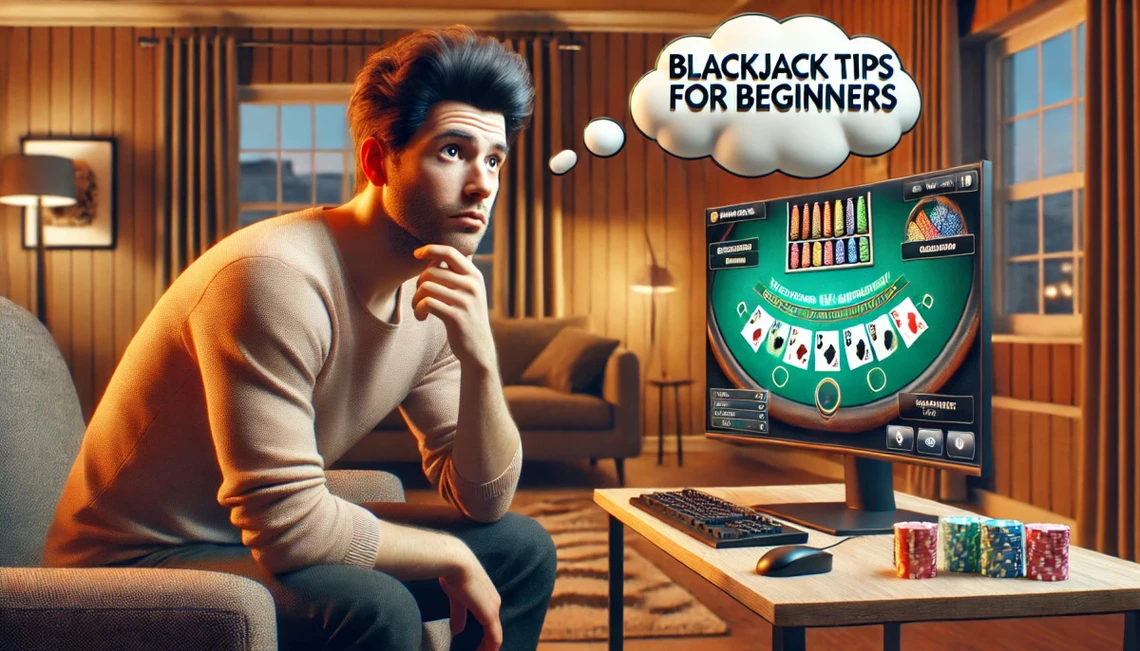
Blackjack tips for beginners

Blackjack is one of the most popular and accessible casino games, blending elements of strategy and chance to keep players on the edge of their seats. For beginners, the game can seem simple at first glance, but understanding the nuances and applying a solid strategy can make a significant difference in your success. This guide covers essential tips to help you get started, from learning basic rules to managing your bankroll and making the best decisions at the table.
Understanding the Basics
Getting comfortable with the basics rules of blackjack is the first step toward becoming a confident player.
Learn the Basic Rules and Objectives :
In blackjack, the main goal is to have a hand value closer to 21 than the dealer’s without going over that number.
Each card has a specific value:
- Number cards (2 through 10) hold their face value,
- Face cards (Jack, Queen, and King) are worth 10 points each
- Aces can be valued as either 1 or 11 points, depending on which is more beneficial for your hand.
Learn Basic Strategy :
Basic strategy is a set of optimal moves based on the statistical probabilities of each hand. Knowing when to hit, stand, will help reduce the house edge and give you the best chance of winning.
- For example, always stand on a hard 17 or higher, and always hit on a hard 11 or lower. While it might take a little time to memorize these moves, following a basic strategy chart will help reinforce them.
Use a Blackjack Decision Chart:
A blackjack decision chart is an invaluable tool for beginners, showing the best move for each hand based on your cards and the dealer’s upcard. By following this chart, players can apply a proven strategy to minimize the house edge. Many beginners keep a chart handy as they learn, helping build confidence and gradually internalize basic strategy.
Avanced Tips for Better Play
Once you understand the basics, implementing a strategic approach can elevate your blackjack game.
Know When to Split Pairs:
Splitting pairs can turn an average hand into a winning one, but it’s essential to know which pairs to split.
As a general rule :
- Always split Aces and 8s. Splitting Aces increases your chance of forming a strong hand, while splitting 8s helps you avoid a weak total of 16.
- Never split 10s or 5s; a hand of 20 (two 10s) is already strong, and doubling down on a 10 is often better than splitting 5s.
Avoid Insurance Bets:
When the dealer’s upcard is an Ace, you may be offered an insurance bet, which protects you if the dealer has a blackjack. However, statistically speaking, insurance bets are not in the player’s favor and add to the house edge. Experienced players typically avoid this option, as it doesn’t significantly improve your chances and can quickly eat into your bankroll.
Managing Money and Bankroll
A solid money management plan is key to enjoying blackjack responsibly and extending your time at the table.
Manage Your Bankroll Wisely:
Before starting a session, decide on a budget—an amount you’re comfortable losing if things don’t go your way. One effective approach is to divide your bankroll into betting units, where each unit is about 1–5% of your total budget.
- Example: if you have $200, you might consider $5 per hand as a comfortable bet. Sticking to these units prevents you from placing overly risky bets and helps you manage your funds throughout the game. Also, avoid “chasing” losses by increasing your bet size after losing hands; this can quickly deplete your bankroll.
Choose the Right Table or Online Game:
Not all blackjack tables are created equal, and choosing one with favorable rules can impact your chances of winning.
- Look for tables that offer 3:2 payouts for a blackjack (instead of 6:5) and where the dealer stands on all 17s, as these rules offer better odds for players.
- Consider table limits that align with your bankroll—choosing tables with minimums that allow you to stick to your betting unit strategy.
Take Advantage of Bonuses and Promotions:
Boost your bankroll by utilizing blackjack casino bonuses and promotional offers. However, always review the terms and conditions closely to understand wagering requirements and game restrictions before diving in.
Emotional and Responsible Play
Stay Disciplined and Avoid Emotional Play:
Maintaining discipline is crucial, especially after a losing hand. Emotional decisions often lead to impulsive bets and further losses. Stick to your strategy, regardless of wins or losses, and remember that blackjack is a game of patience.
Play Responsibly:
Set clear limits on your time and spending to avoid going over budget. Online gaming can be immersive, so it’s essential to step back and stay in control. If you ever feel that your gambling is getting out of hand, don’t hesitate to seek support or use self-exclusion options available in most online casinos.
Conclusion
By understanding the basics, managing your bankroll wisely, choosing favorable games, and keeping a disciplined, responsible approach, new players can enhance their enjoyment and improve their chances of success.

Author
Content Writer